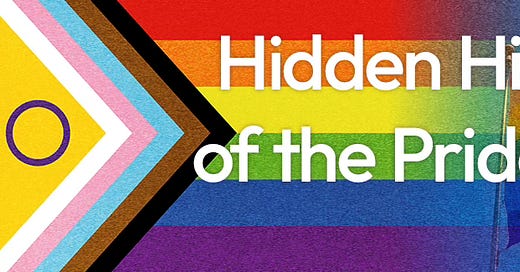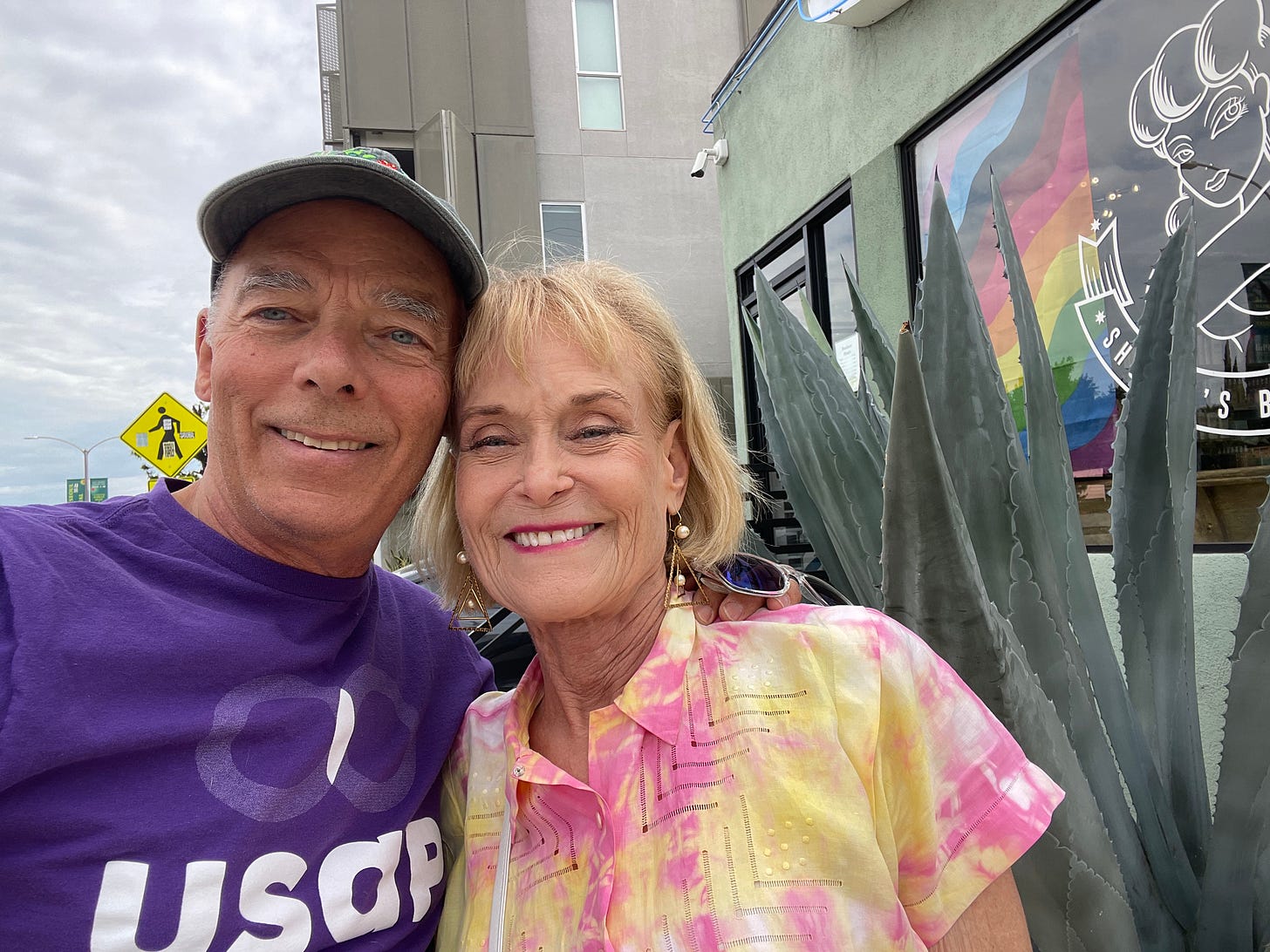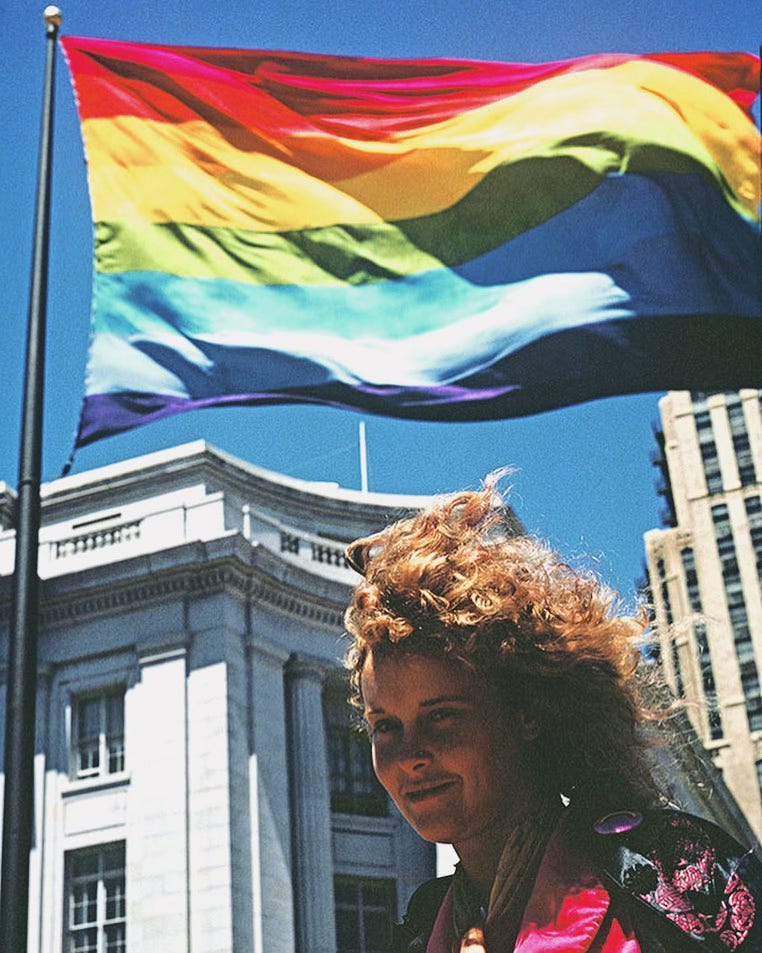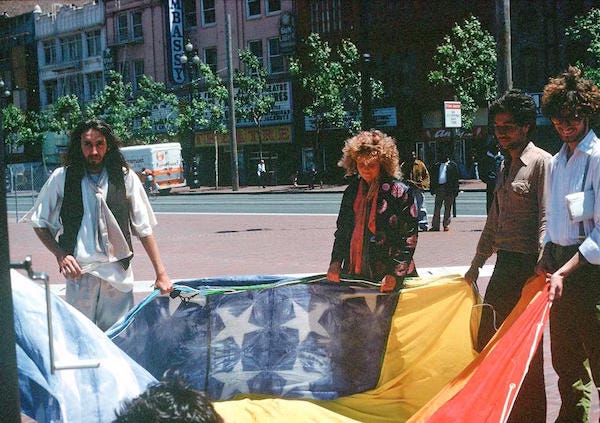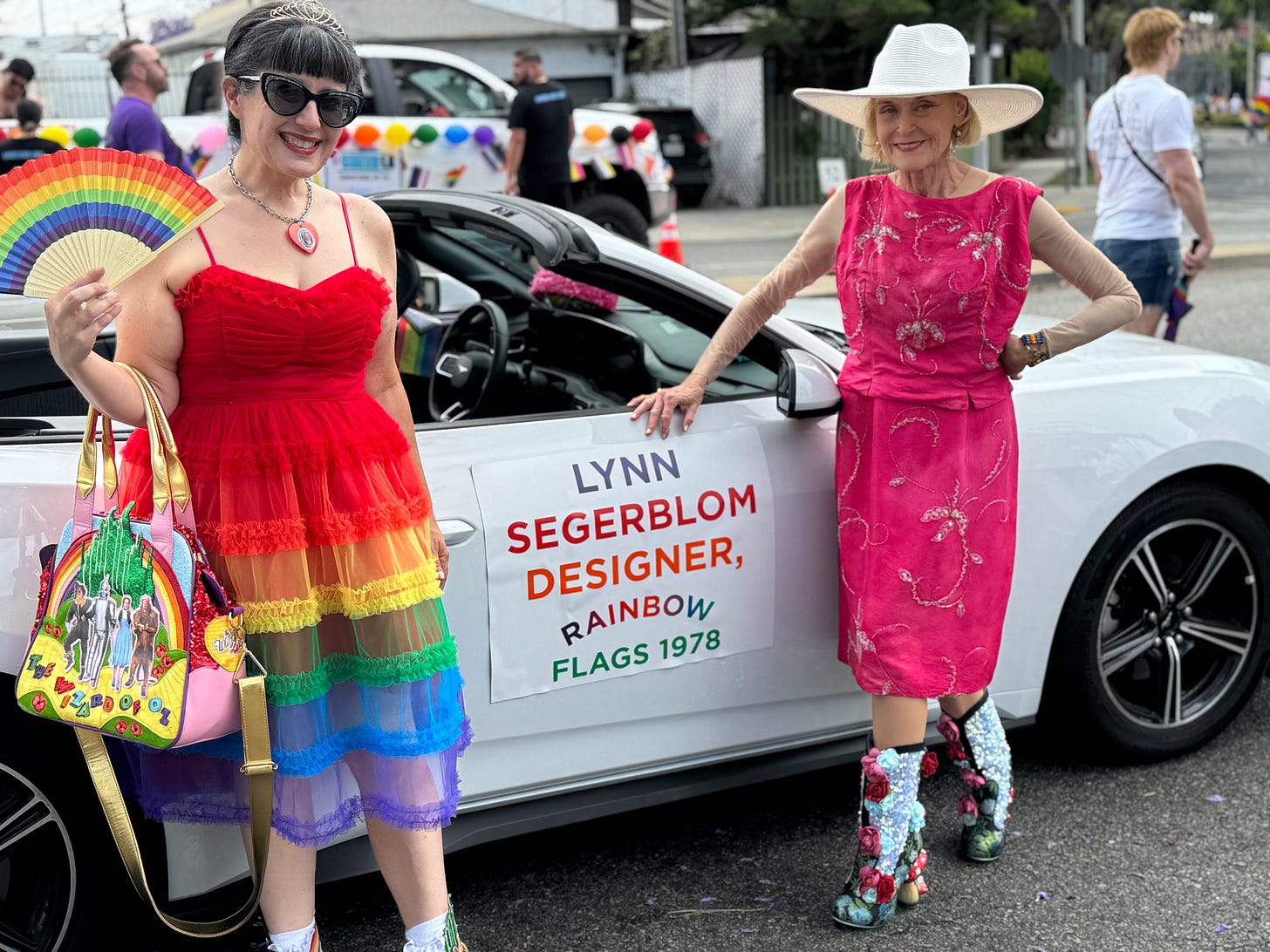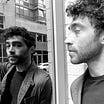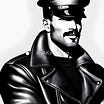Hidden Voices: The Pride Flag's Hidden History
The Story of the "Mother of the Rainbow Flag" Must be Shared
Meet Lynn Segerblom, the “Mother of the Rainbow Flag,” whose story continues to be hidden from the Voices which build solidarity in our LGBTQIA+ community.
Thank you to San Diego Pride for sharing the rainbow flag’s hidden history here.
The modern pride flag is iconic. The six-stripe pride flag, which has inspired the Philadelphia Pride Flag, Progress Pride Flag, and its intersex-inclusive versionare staples of Pride parades and festivals around the world. We see them plastered on products and printed on clothing each pride season.
For those interested in the history of our movement and its symbols, there is plenty of information out there about one of the creators of the original pride flag. That flag, the eight-stripe version, which included pink and turquoise stripes, was one of a set of two flags originally designed for the 1978 San Francisco Gay Freedom Day Parade, and hoisted in San Francisco’s United Nations Plaza on June 25, 1978. The other featured a field of tie-dyed stars in addition to the rainbow stripes.
Lynn Segerblom, the Chair of the Decorations Committee, spearheaded the concept of the rainbow flags with the other members of the committee, along with artist and promoter Gilbert Baker. Over the years, the flag and legendary origin story became synonymous with Baker, who spent much of his life promoting the flag and its message globally. And the co-creators’ stories have been largely hidden.
What is often lost is the story Lynn Segerblom, a tie-dye artist who went by the name Faerie Argyle Rainbow, and developed the dying process for the flags, and seamster, James McNamara,who sewed and also photographed the flags. These two artists worked along with Baker and a team of volunteers to develop and create the massive 40 foot by 6 foot flags, hand dying and sewing the strips of material, which took a team of 30 volunteers to produce.
Below we can see Gilbert Baker (left) and Lynn Segerblom (center) preparing to raise the first flags high above San Francisco’s Civic Center.
After its creation, Baker assigned meaning to each of the flag’s colors: hot pink for sexuality, red for life, orange for healing, yellow for sunlight, green for nature, teal for art and magic, indigo for serenity, and violet for spirit. The rainbow flag shifted to a seven-stripe design due to the practical challenge of sourcing hot pink materials, and then to the six-stripe version to allow for symmetrical display on San Francisco lamp posts. That six-stripe version is what exists today.
For nearly 40 years the flags and the story remained hidden, until a fragment of the original eight-stripe flag resurfaced after Baker’s death as part of his possessions, along with excitement and tales of those who had helped create it.
The Symbol of Solidarity
The hidden history of our community’s most enduring symbol offers important lessons for our movement today. It echoes the important contributions of individuals across our history. It highlights the power that lies in creativity and artistic expression.
And it reminds us that that progress rarely comes from the actions of individuals alone, but from communities working together. It shows us the importance of preserving and sharing complete stories, especially those of marginalized voices that risk being forgotten.
When we see that rainbow flag flying this Pride season, let's remember all the hands that dyed it, stitched it, and carried it into history — a collaborative effort that continues to inspire liberation movements worldwide. The flag's true power lies not in any single creator's vision, but in the collective dream of a world where everyone can live authentically and with pride.
Lynn’s life represents a HIDDEN VOICE with a story to be shared and cherished.
Lynn joined in the 2025 WeHo Pride Parade (below) and should be acknowledged and celebrated worldwide. Without her, there would have never been a rainbow flag representing our LGBTQIA+ community.
Thanks to San Diego Pride for much of this article honoring the memories and contributions of Gilbert Baker (1951-2017), Lynn Segerblom (Faerie Argyle Rainbow), James McNamara (1946-1999), and the countless volunteers who helped bring the first Pride flags to life.


